Western civilization has made the majority of us into city or town dwellers, in fact United Nations projections indicate that 68% of the world’s population will live in urban areas by 2050.
Knowing how to live off the land and away from urban conveniences is a set of skills that have largely died out as we rely on supermarkets to provide our essentials, ready cooked meals delivered to the door, and online ordering of other things we need or want.
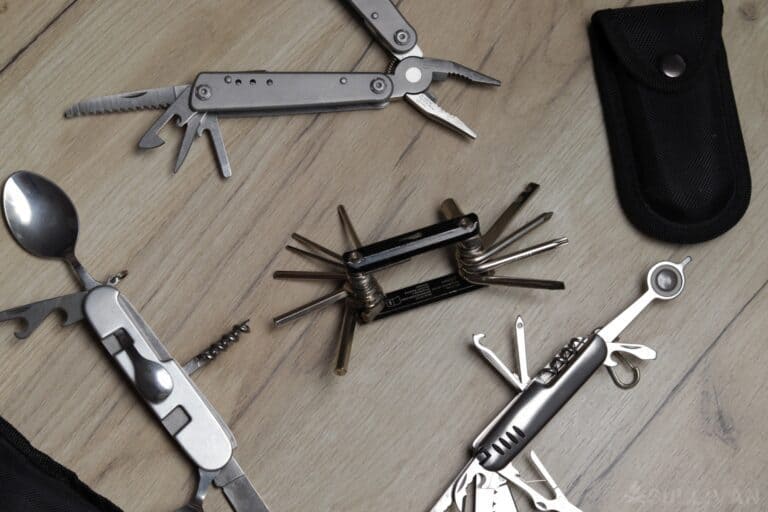
But what if society collapses to the point that you have to survive in the bush for an extended period of time? Would you know what to do? Do your current preps include the bushcraft tools you would need?
Table of Contents
Difference between Prepping and Bushcraft
I want to point out that there is a difference between prepping and bushcraft. Preppers stock up and prepare to survive in a specific location, whether that is bugging in at home or bugging out at an alternative location.
Those who choose bushcraft, are the ones who plan on surviving with little or no human interaction. I’d like to think that most of you reading this have embraced both approaches, at least to some extent, because I fully believe both are necessary.
Here, I am going to cover the basic equipment you will need for survival in the bush, but these tools are only truly useful if you have developed the skills to use them. Bushcraft skills include the ability to:
- Hunt and trap
- Forage
- Purify water
- Build shelter
- Build fire
To accomplish these goals, you need surprisingly few tools. These tools are primarily bladed tools, but there are a few others you will want in your arsenal to be able to survive whatever the bush might throw at you.
Bladed Bushcraft Gear
No one can survive in the bush without at least one bladed tool. They are a must, plain and simple, and since there is such a variety of bladed tools that have many different uses, having more than one is ideal.
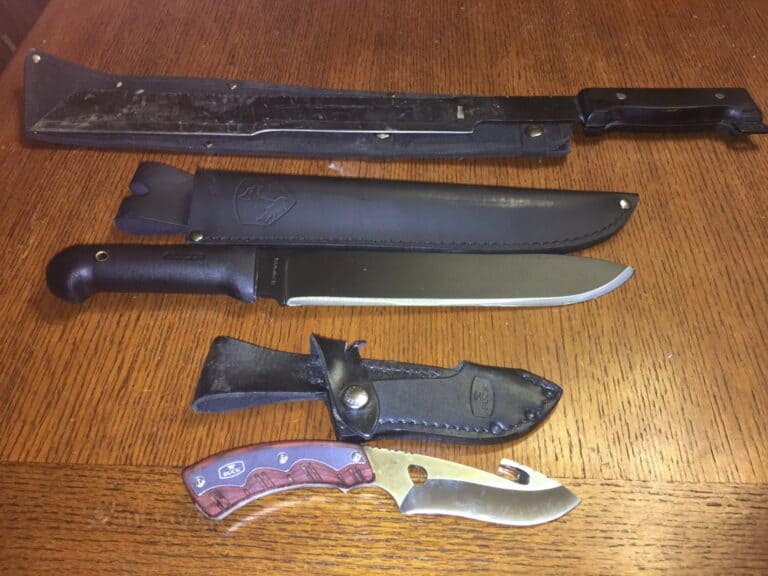
In fact, in the old days the most essential tools for bushcraft included three blades – a large knife, a small knife, and an axe or hatchet. Some bushcrafters also include a saw in the essential blades, so I will cover it here.
Machete
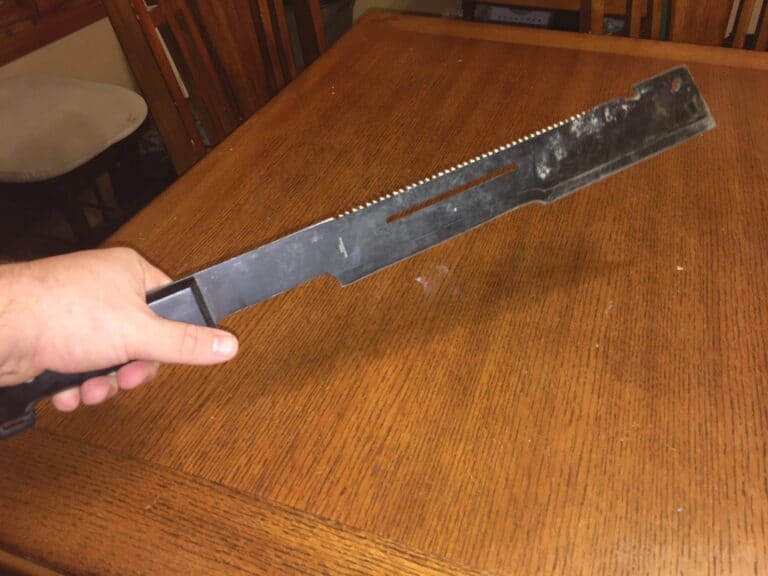
If you could only take one blade with you into the bush, it would have to be a large knife or a machete. Really, a machete is just one heck of a big knife, shaped to fit its purpose of slashing through vegetation.
A large knife can handle a lot of jobs you would give to a small knife and a lot of jobs an axe could handle. Some might say it is a hybrid of a knife and an axe, which is why it is the ideal choice if you can only have one blade. A large knife can be used to:
- Clear brush
- Cut branches
- Cut small logs
- Dig
- Skin and butcher game
- Defend yourself against wild animals (that includes people!)
- Pry or as a drawknife
Bushcraft / Survival Knife
A good solid small knife (fixed-blade or folding) is going to provide you with years of use, provided you spend the extra money for a high-end knife and you care for it properly. The beauty of the fixed-blade knife is in its versatility and its maneuverability.. With a small knife you can:
- Whittle and carve wood
- Cut small branches
- Skin and gut game
- Prepare food
- Prepare traps and snares
- Defend yourself
You can use your imagination to come up with loads more uses for your blade. The important thing to know about a small knife is that its smaller blade allows for precision work that would be difficult with a larger blade.
I will add here that having two separate blades, a large one and a small one, is far better than getting a medium knife that you think will do it all.
A medium knife will be able to handle many of the jobs a small or large knife can handle, but will not do it as well. That means you will lose efficiency and/or accuracy.
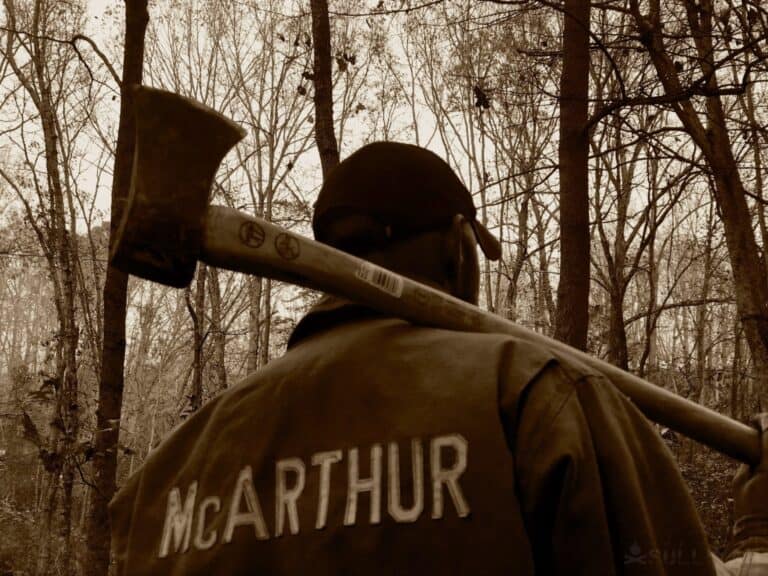
Axe
An axe or hatchet is another must-have for any serious bushcrafter. You can accomplish many of the heavier jobs which a knife is incapable of handling. Axes are used to:
- Fell trees
- Chop wood
- Cut notches in wood to build a structure
- Butcher large game
- Dig
- Hammer posts and stakes
If you think that you can use a knife to do the job of an axe or hatchet, please think again. There is no tool that is designed more adequately than an axe or hatchet for chopping wood. In a pinch you can use a large knife for axe-worthy jobs, but it won’t be easy.
Read about axes here.
Tomahawk
Also consider the merits of the tomahawk, a lightweight axe that was popular with the first Americans as it is lighter than an axe and can perform many of the same tasks.
In tropical and sub-tropical areas where there is a lot of undergrowth the machete is popular as it can slash a pathway through tangles of vines and underbrush fairly fast.
In colder climates or where there is significant cooler forest growth the axe comes to the fore in dealing with cutting larger trees for firewood and shelter.
The tomahawk falls in between the two – probably more useful on the plains for dealing with smaller trees, preparing large game, and for defense in more open areas.
Saw (Folding or a Pocket Chainsaw)
Disclosure: This post has links to 3rd party websites, so I may get a commission if you buy through those links. Survival Sullivan is a participant in the Amazon Services LLC Associates Program. As an Amazon Associate, I earn from qualifying purchases. See my full disclosure for more.
A saw is another bladed tool that is useful for bushcraft. It is a highly specialized tool that is used to cut wood for the purpose of building – well – anything.
The quality of the blade and handle is obviously very important. Impulse hardening technology used by the Japanese manufacturers means that the teeth last as much as three times longer than regular saw teeth.
On the other hand the pocket chainsaw like this one could be put to use in clearing trees that have come down over the road blocking an escape route. It’s a bit of a workout using the pocket chainsaw, but so is the folding saw.
The quality of the saw you buy is going to determine how well it works. Practice your skills first – getting the teeth set onto the tree is a bit of a knack then once you have the kerf then it’s easy and within a minute or two you will have sawed through a fair tree limb.
Whether you are building shelter, furniture, or ladders a saw is the idea tool, but I’ll be honest here. You can get by just fine without a saw if you have the other three blades.
Multi-Tool
Multi-tools are so important for survival than many preppers actually have them in their EDC kit. It only make sense to include one in your bushcraft kit as well. The Gerber Suspension NXT Multitool is one that is lightweight enough for survival yet robust enough to do the job.
Leatherman also makes awesome multi-tools. You will probably find the awl tool very useful for making holes in wood to create a toggle, to fasten things together with cord, for making holes in leather and so on. Learn all the uses of the tools within your multitool and never be at a loss again.
Carving Tool
You never know when you’ll have to make your own survival equipment on the go. For example, you might have to carve yourself a knife or a bowl. An inexpensive carving tool could be a great addition to your BOB.
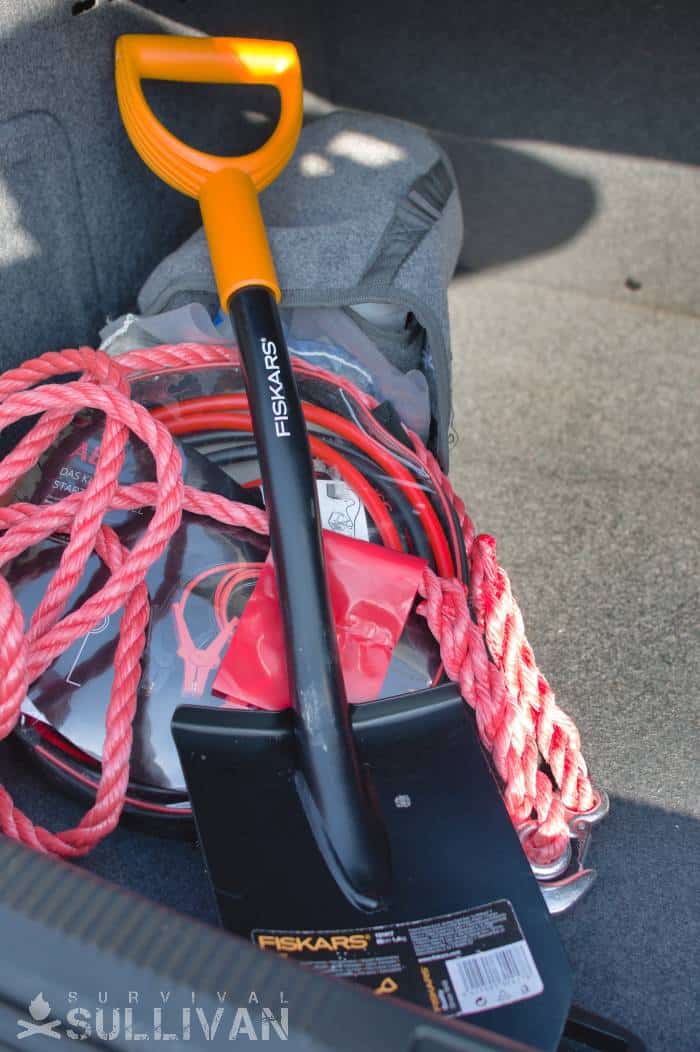
Shovel
In case you need to do some digging (such as a Dakota fire hole), a shovel, foldable or not, is something you should have (and spare your knife or machete). Of course, if you can carry a small fixed-blade one, the chances of it breaking are greatly diminished in the long run.
Do your homework before buying and test out folding shovels meant for heavy duty use. You don’t want to buy lightweight shovels that break easily.
Non-Bladed Bushcraft Tools
Some real die-hard bushcrafters will say you need nothing more than a couple of good blades. Just strap them on your belt and you’re good to go. That might be true for the most skilled survivalist.
You can indeed go out into the bush and use those three bladed tools to cut the wood you need to build a fire, strike flint or another type of sparking rock, build a lean-to or more permanent shelter, skin and butcher game, cook, and more.
However, there are a few other important bushcraft tools that I recommend you have in your arsenal. Not only will they make bushcraft easier, they are so small and light that they are easy to add to your pack.
Some of these things really should be and probably are part of your regular BOB, but I’m going to discuss them here anyway because they are important when living in the bush.
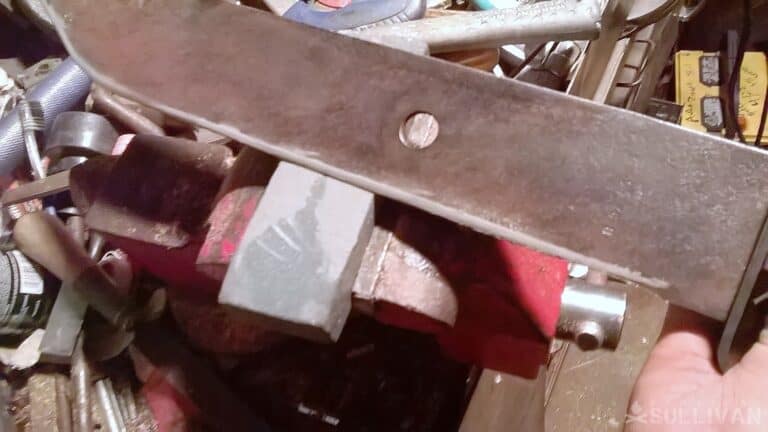
Whetstone or a Knife Sharpener
If your blades are your most important bushcraft tools, then you are going to need to keep them sharp or they won’t be of much use to you.
Unless you know how to create a whetstone in the bush or you know other ways to sharpen your blades, a knife sharpener is going to be an essential bushcraft tool.
What is convenient about the Sharpal 116N is that the three different grits are credit card size and come with a mirrored back for emergency signaling.
The different grits are for edge setting, sharpening and honing. If you require something larger for axe or hatchet sharpening then this pebble puck whetstone may be more appropriate.
Folks know that an axe that is not sharp can bounce back or deflect when used and that can lead to the possibility of injury… so, to be safe, they make sure the axe is kept sharp and ready for use.
The good part about this whetstone, made from 100% silicon carbide is there is no need for honing oil and its larger surface makes sharpening a lot quicker.
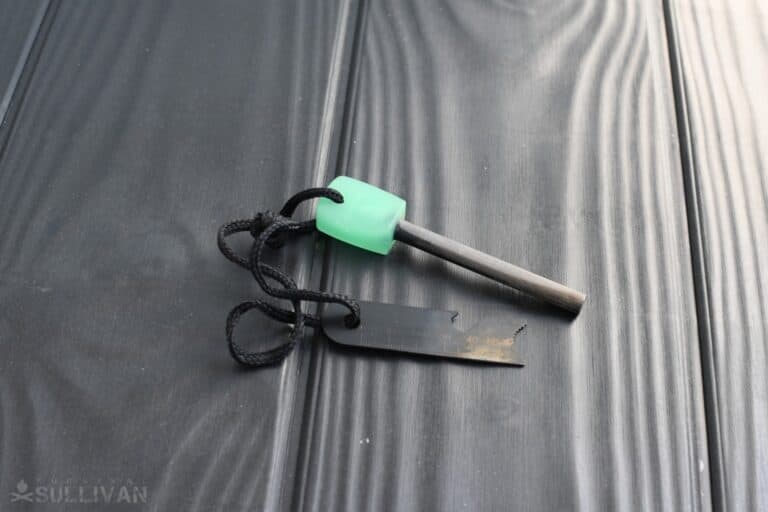
Fire Starter
The most important thing you will need for your survival is a fire. You will use this to keep warm, purify water, and cook your food. It can also be used to sterilize tools and cauterize wounds if the need arises.
Unless you really know how to start a fire from natural materials found in the woods (and you should), you are going to need a tool that will help you start a fire.
A good fire starter will have a striker that lasts for hundreds or thousands of strikes. I like this firestarter necklace. The necklace is pretty stylish and consists of a ceramic scraper made from Zirconia – it may look like plastic but it is definitely not – which is scraped against the ferrocelium barrel toggle.
The scraper is white, and the toggle black making for a good contrast and is crafted onto a handmade leather thong with adjustable knots.
This way you always have it on you and don’t have to dig around in a BOB for your firestarter. The scraper and barrel have a ‘lifetime’ guarantee, although the leather type cord may need replacing after some time.
Fire starers suggestions:
- lighters (bic, zippo)
- ferro rod fire starters
- magnesium fire-starters
- and many others
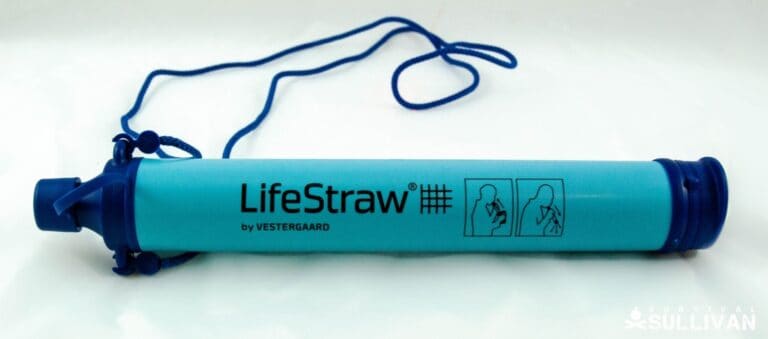
Portable Water Filter
Again, there are ways to purify water while in the bush simply with what you have on-hand. Boiling is the best way and requires a pot and fire, but carrying a way to purify water in your pack is important for those times when you cannot or should not make a fire.
Water purification tablets are light and easy to carry and there are plenty of small purification systems that are designed to fit in your pack.
Lensatic Compass
If your navigation skills are even moderately good, you might not need a compass, but it doesn’t hurt to have one.
Avoid button compasses as they don’t offer good precision when navigating. Instead, go with a professional one like this one which, although a bit on the heavy side, is durable and performs well.
You will also need a map of your area and where you intend to go. Hopefully, you have spent some time getting to know the area around your home for at least a 50 mile radius, but regardless, having a map will help you find important resources, such as:
- Roads
- Railways
- Rivers, lakes, and other sources of water
- Forested areas
- Towns and cities of various sizes
- Crown land
- National and state parks
Aluminium Pot
When you have your fresh caught fish or meat, you can cook them on a stick or a makeshift spit over the fire.
If you manage to forage for and find some wild greens, or have a supply of onions, carrots, or other types of edible veggies, you can make a soup if you have a pot.
Having even one small aluminum pot will allow you to have some variety in your otherwise meager menu. It will also allow you to boil water. Make sure you have a spoon so you can eat what you cook and a water bottle or canteen in which to carry water.
Last but not least, let’s not forget the old propane stove. Compact and lightweight, it’s a must if you’re assembling an INCH bag or a bug out bag that will help you survive for days on end in the wilderness.
Recommendations:
- a wood burning stove
- propane stoves
- or alcohol stoves
“Primitive” Tools
There are a number of “primitive tools” that some preppers like to have on hand. If you’re passionate about the old ways, consider having some of the following:
- primitive spears (for hunting and fishing)
- wooden items for the bow drill method (bow, spindle, board)
- rock slings
- lassos for hunting big game
- …and more.
You can learn how to make each of them by taking a bushcraft class or by watching YouTube videos and trying to replicate them.
Tarp
Learning how to build your own shelter out of wood, boughs, and anything else you can find in the wild is advantageous when in the bush. However, if you can manage to carry something to help make that shelter waterproof, it will make things easier for you.
A tent might be a bit much to carry around with you in the bush. If you want a lightweight one, the price might be too high, but if you can afford it, then do it.
Otherwise, at least bring a good-quality tarp, a small sleeping bag, a bivvy bag, or even a poncho.
Even if some of them won’t provide you with warmth, you can use whatever’s available to fix that: branches, dead leaves, moss, rocks etc.
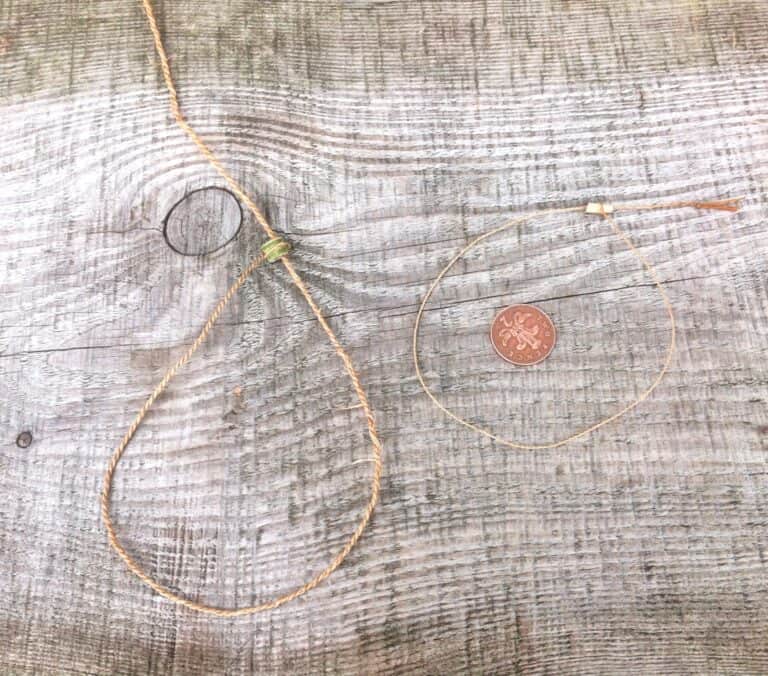
Snare Wire
You have the right blades to skin and butcher your game, but first you have to catch that game. A copper wire won’t add bulk or weight to your pack and it will make it so much easier to catch your dinner than if you only use your knife and your bare hands.
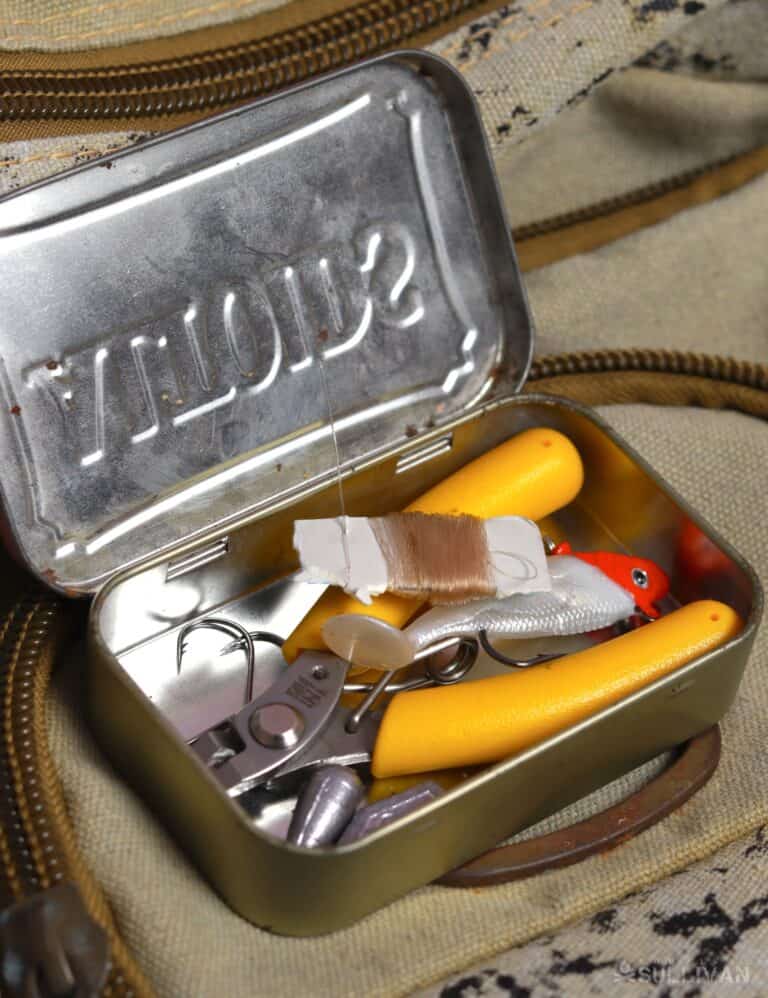
Fishing Line and Hooks
Having a small fishing kit, particularly a line and some hooks, will also be of great help when in the bush. Again, this is something that is small, easy to fit in your pack, and will save you loads of frustration.
Being Truly Prepared
These tools are just the beginning. You need to do further research to decide which ones are right for you. Read the reviews on the sites you buy them from. See what people DON’T like about them, and the alternatives they recommend.
Once you get your bushcraft tools, don’t let them sit there and collect dust! Use them on your camping trips, bug out drills, survival challenges and even around the house. Remember that skill trumps bushcraft gear any day.
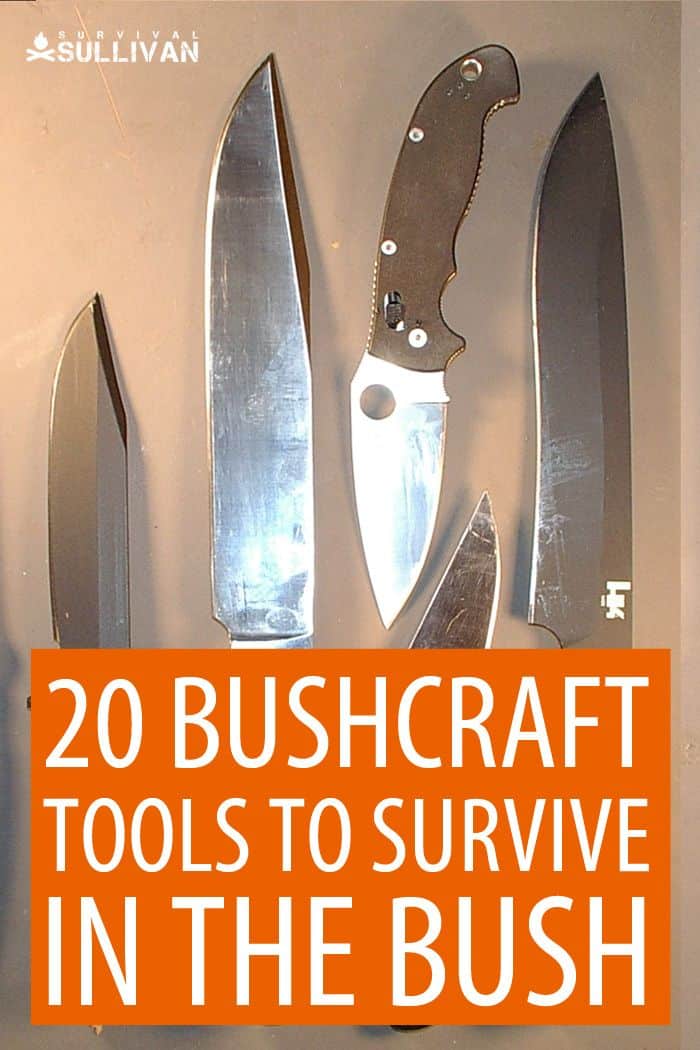

An urban prepper and rural wannabe, Karen has been working as a freelance writer for a decade and prepping for about half that time. She has gathered a wealth of knowledge on preparing for SHTF, but there is always more to learn and she has a passion for gathering and sharing that knowledge with other like-minded folk. Karen lives in London, Canada with her two children and plethora of cats.

I’ve been experimenting a bit by taking a small 1.5kg, short handled mattock out and about with me. It’s a decent forged item that can take some punishment.
The adze on it is angled well and good for digging (obviously ) and grubbing, but also can be used to shape timber. The axe on the back is a bit small but can fulfill most requirements.
I’m thinking I might try replacing my axe with it and see how I go.
It could also make a rather effective defensive weapon too…
If it comes down to being out in the sticks and that is the place you end up trying to survive, I believe a wide bladed hatchet is a must. You can use a heavy bladed machete-knife for most things but one thing that is a long-term survival must, for cooking and heat, is firewood, in particular, kindling.
Almost every outdoor survival scenario, unless you are in in Antarctica or the North Pole, is firewood.
To cut down, cut up and split wood from a tree or large bush, a hatchet is a necessity. The difference in trying to split wood, in particular, fresh cut, between a machete-knife and a hatchet or ax is night and day.
Also, a hatchet makes an effective weapon (TV show “Vikings” demonstrates)
So besides a knife or two, a hatchet with a wide blade is an absolute requirement.
Hi, I say yes to that and I would also go with a pocket chainsaw, it makes easy work of a long log. Or some kind of silky-saw.
This is the best I have seen.